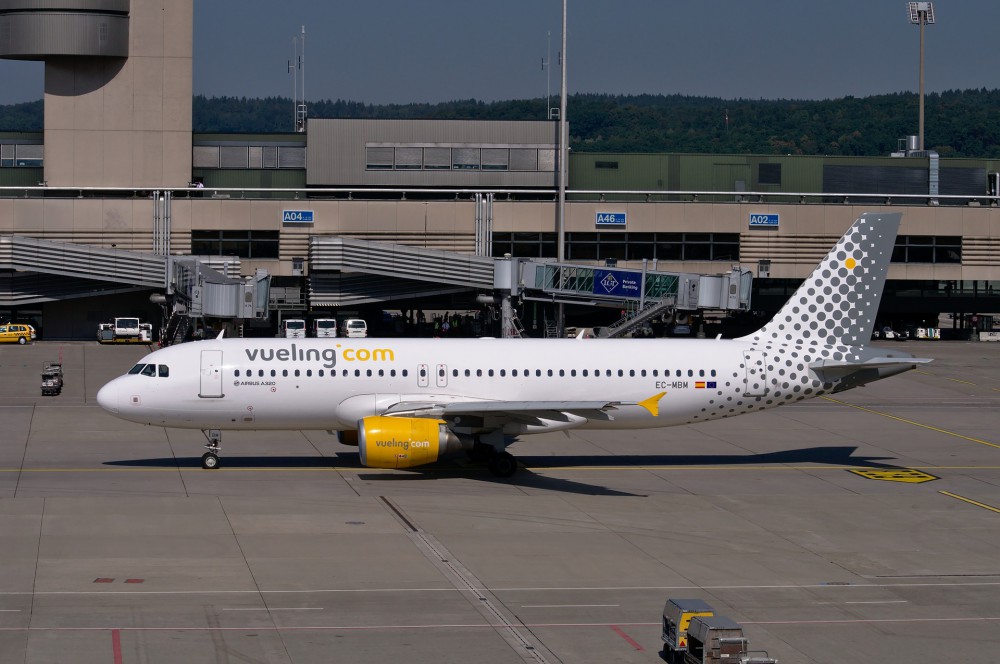The airline industry is one that depends on data to function. Data is transforming all step of airlines operations pre- and post-flight, starting from ticket purchase, ground transportation, flight schedules, delays etc. All industries working with data have their own specifics and frequently encounter data fragmentation, especially complex multi-department organisations. But the nature of the airline industry is even more complicated, and consequently, data fragmentation is more pronounced.
Ignacio Gavira, Head of Operations Analysis and Performance at Norway’s largest airline Norwegian, presented at Data Innovation Summit 2019 on data fragmentation in the airline industry and the implications of it.


Specifics of the airline industry
Airlines are the winner when we are talking about complex operations. Some of the quirks that Ignacio points out are:
- Highly saturated market – the competition is even fiercer in the low-cost segment of the market, where Norwegian operates.
- Critical 24-hours operations and a high volume of data – planes come and go 24/7 so there is a huge volume of data flow and because of that, the majority of resources are allocated to live system operations.
- High exposure to external factors – Air Traffic control, airport congestion, weather conditions and fuel prices put a big strain on operations.
- Extreme customer protection measures – No other industry on the planet entitles customers to higher compensation as high as the airline industry. Cancelled or delayed flights put the airline industry in a vulnerable position.
These are specifics that all airline share. Norwegian on the other hand, operates with 6 different airlines, with 11 thousand employees across the whole world. Consequently, they have dozens of isolated IT systems, such as crew planning, commercial planning operational tracking, check-in, baggage tracking.
Moreover, a typical airline operating with 1 air operator certificate (AOC), has multiple departments like commercial, operations, corporate, finance, marketing/communications. Whereas, Norweigan has very distributed operations to individual companies providing specific resources for the whole Group. This complex structure provides silos for information that is not shared among departments.


Types of silos
IT systems that don’t talk to each other are the most common source of data silos. This happens because vendors don’t allow extraction of data outside of them. However, data silos don’t just appear within IT systems, they can have different origins, Ignacio states. Cultural silos happen when employees are not willing to raise their concerns to line managers. Physical silos are common when a company has offices around the world, and even the same business areas don’t work together physically. Operational silos happen when the same data is interpreted from different points of view, such as opposing KPIs in different departments. Legal/AOC silos are found among AOCs from different countries and the conflict arises when confidential information can’t leave the AOC. A good example of AOC silo is Brexit as Ignacio says they are uncertain what will happen with the personal data.
What happens when information doesn’t flow within the organisation
The two examples that Ignacio shares are not Norwegian cases, but nevertheless are relevant to present what happens when data silos disrupt data flow.
The first example is of an airline named Southwest – the first low-cost airline in the world. But in 2013 they made a crucial mistake. They had realised that the demand for tickets was high, but they weren’t receiving the aircraft at a proper rate. To fly more flights they had two options: keep the schedule as it is or try to squeeze in more flights with the same number of staff and aircraft. So of course, they chose to add more flights, and as a consequence, their arrival performance plummeted, from which they couldn’t come back.


The second example covers Vueling – the first Spanish low-cost airline. They had experienced steady growth until 2015 when they decided to increase routes to 400 in the summer of 2016 based on increased demand. But they too experienced the same fate as Southwest, their performance tumbled and they were the worst low-cost airline in the world. Unlike Southwest, they didn’t invest in customer care and were faced with huge fines for delays and cancellations.


4 reasons for failure
There are 4 main factors for failure that are shared between the two airlines, accounts Ignacio:
1) Key data ignored – In Southwest’s case they thought they could work the new flight schedule with data from a year with good weather, but 2013 wasn’t a sunny year. Also, they brought in new aircraft with 40 more seats than their older fleet and didn’t account for the increased ground time for boarding and deboarding more people.
2) Lack of common targets – In both cases, the priority was given to one department’s KPIs, while ignoring the operational impact and the greater good. The tighter schedule contributed to a loss of punctuality and an increase in delays.
3) Legacy IT systems – In the case with Southwest, they quickly realised that they couldn’t keep up with the schedule, but their legacy IT system couldn’t support the volume of changes that were necessary to fix the issue.
Whereas in the case with Vueling, employees knew that the new schedule is impossible to be executed, but they didn’t raise their concerns to the executives. Also, their flight planning system didn’t support automatic fixes, every change had to be made manually, which caused errors to pile up.
4) Failure to communicate – Both in Southwest and Vueling example, operational managers failed to raise concerns about the tight schedule, even though they were quite aware that it was impossible to execute.


All these are operational consequences from data fragmentation, but there are other lost opportunities caused by silos in the airline industry, Ignacio emphasises. Some of them are:
- Loss of cross-sale of ancillaries and extra products on flights
- Inability to anticipate customer behaviour based on social network data
- Inability to manage irregularities in real-time – which is connected to the delay compensation and lack of insight into risky flights to mitigate them.
- Lack of insight from sales pattern about operations – a low number of pre-sold checked baggage might indicate there will be extra hand baggage which can lead to a delay.


What can be done to break the silos
Of course, there is something to be done to break the data fragmentation and silos, but it should be at an organisational level, and within specific departments, advises Ignacio. He suggests to
- Start small and look for a company-wide problem that can be solved with data and provide a tangible benefit. Then move forward by integrating all data from different systems and department.
- Become data-driven based on data integrated from different systems and business areas. Democratise data across all departments and set up a centralised team that will own the data, and not leave it only to IT to manage it.
- Establish open internal communication. Make it easy for employees to raise their concerns and give ideas about how the company works. For international companies such as Norwegian, Ignacio says it’s essential to have a tool that allows real-time communication between employees in different countries and keeps different departments in the loop.














Add comment